Standing seam roof panel Roll formando equipo Clip lock steel puede producir material rango de espesor 0.7-1.2mm, material PPGI, acero galvalume, Aluminio y acero galvanizado, el ancho puede hacer 300mm a 500mm, ajustar por espaciador manualmente, sus productos son ampliamente utilizados en el techo y sistema de pared en la construcción de talleres y construcción de viviendas.
Dibujo de perfil de la máquina perfiladora de paneles de tejado de junta alzada

Flujo de trabajo de la máquina perfiladora de paneles de tejado de junta alzada
Desenrollado - Alimentación con guía - Perfilado - Corte hidráulico - Recogida de productos
Lista de máquinas de perfilado de paneles de tejado de junta alzada
|
Lista de máquinas
|
Desbobinador pasivo de 5 toneladas | 1 juego |
| Guía de alimentación | 1 juego | |
| Máquina formadora de rollos principal | 1 juego | |
| Caja de control del PLC | 1 unidad | |
| Estación hidráulica | 1 unidad | |
| Corte hidráulico | 1 juego | |
| Mesas a 4 metros | 1 unidad | |
| Cubierta de seguridad | 1 juego |
Datos técnicos
| Artículo No | Descripción | Tipo de unidad | RF-RP |
| 1 | Espesor del material | milímetro | 0,5-0,7 mm Acero con revestimiento de color Chapa de aluminio de 0,7-1,2 mm |
| 2 | Velocidad de formación | m/min | 8-12 |
| 3 | Soportes de rodillos | estar de pie | Alrededor de 15 |
| 4 | Material del rodillo | Acero 45#, revestido con cromo, tratado al fuego, HRC 58-62 | |
| 5 | Diámetro y material del eje | Ф75, acero 45#, tratado con fuego, HRC 58-62 | |
| 6 | Potencia del motor principal | kilovatios | 7.5 |
| 7 | Poder de corte hidráulico | kilovatios | 4 |
| 8 | Presión hidráulica | MPa | 12 |
| 9 | Fuente de alimentación | 380V, 50HZ, 3 fases | |
| 10 | Tolerancia | milímetro | -1.5 |
| 11 | Material de corte | Cr12Mov | |
| 12 | Sistema de control | PLC con pantalla táctil | |
| 13 | Peso de la máquina principal | T | Unas 5 toneladas |
| 14 | Especificación exterior | metro | 6.5*1.2*1.0 |
| 15 | Tipo de transmisión | transmisión por cadena |
Detalles de cada composición
1.Desenrollador
- Desenrollador pasivo de 5 toneladas
- Diámetro interior de la bobina: ¢ 460-520 mm
- Diámetro máximo de salida de la bobina: ¢ 1250 mm
- Ancho máximo de bobina: 800 mm

2. Cortar
- Movimiento de corte: La máquina principal se detiene automáticamente y luego corta. Después del corte, la máquina principal se iniciará automáticamente.
- Material de la hoja: CR12Mov con tratamiento térmico
- Medición de longitud: medición automática de longitud
- Tolerancia de longitud: +/- 1,5 mm
3. Fuera de la mesa
- Adopta acero soldado y rodillo soportado para transmitir los productos.
- Size:4000*1350*1000mm
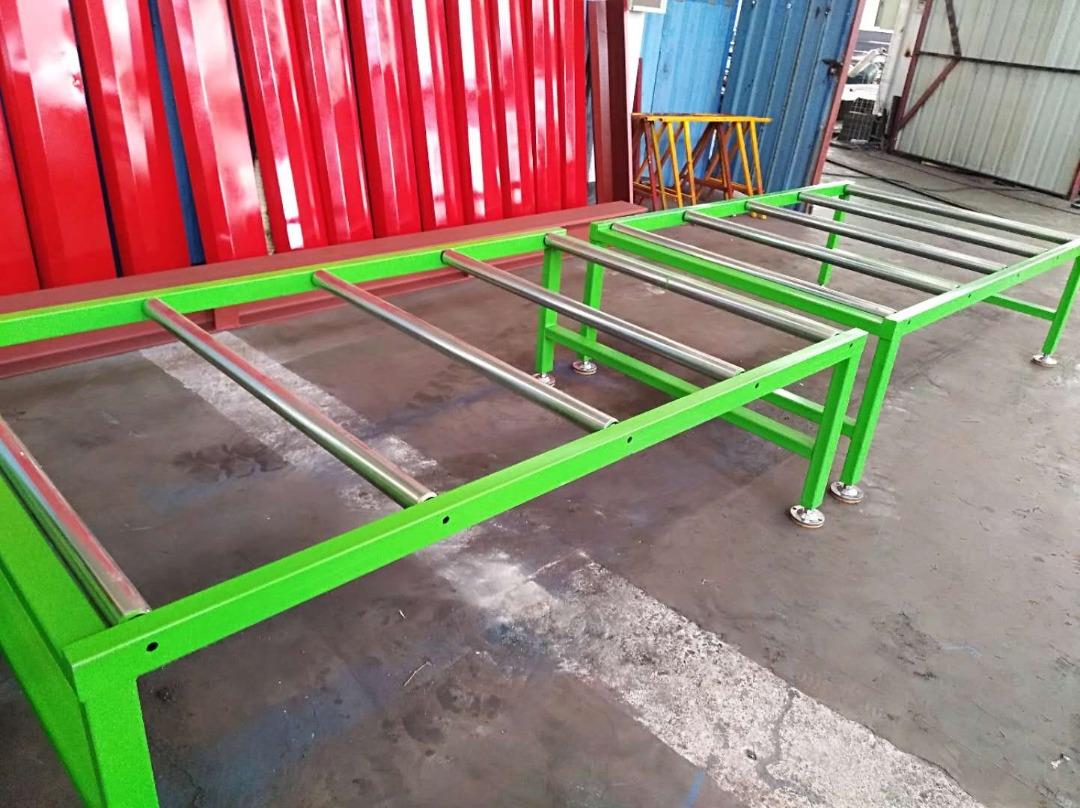
4. Caja de control
- Voltaje, Frecuencia, Fase: 220V, 60 Hz, 3Fases
- Medición automática de la longitud:
- Medición automática de cantidades
- Se utiliza un ordenador para controlar la longitud y la cantidad. La máquina cortará automáticamente a la longitud deseada y se detendrá cuando se alcance la cantidad requerida.
- La inexactitud de la longitud se puede corregir fácilmente.
- Panel de control: interruptor tipo botón y pantalla táctil
- Unidad de longitud: milímetro (encendido en el panel de control)


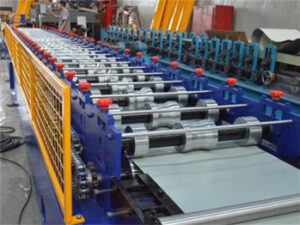
Solicitud
Dibujo de perfil

Perfil de viga con paneles solares
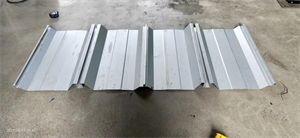
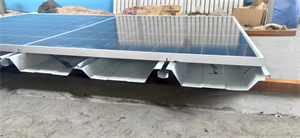
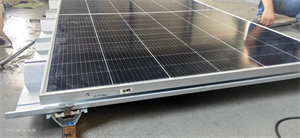


¿qué es la perfiladora de juntas alzadas?
Una máquina perfiladora de junta alzada es un equipo especializado utilizado en la industria de la construcción para producir paneles de tejado metálico de junta alzada. Los tejados de junta alzada son conocidos por sus características juntas en relieve que se extienden verticalmente a lo largo de la superficie del tejado. Estas costuras proporcionan una excelente resistencia a la intemperie y evitan que el agua se infiltre en el tejado.
La perfiladora está diseñada para transformar chapas metálicas planas, normalmente de acero o aluminio, en paneles de junta alzada. Funciona haciendo pasar la chapa metálica a través de una serie de rodillos que gradualmente le dan forma y la doblan hasta conseguir el perfil deseado. La máquina suele constar de varias estaciones, cada una de las cuales realiza una tarea específica, como el corte, el perfilado y el engatillado.
He aquí una visión general del proceso de perfilado:
- Desbobinado: La máquina comienza desenrollando una bobina de chapa, que se introduce en la línea de perfilado.
- Perfilado: La chapa metálica pasa a través de una serie de rodillos que le van dando forma hasta conseguir el perfil de la junta alzada. Los rodillos tienen contornos estratégicamente situados y matrices de conformado que doblan la chapa metálica a lo largo de toda su longitud.
- Corte: En determinados puntos de la línea de perfilado, la máquina corta la chapa metálica continua en paneles individuales de la longitud deseada. Este paso suele estar automatizado y sincronizado con la velocidad de la máquina.
- Perfilado: Las estaciones adicionales de la perfiladora pueden realizar otras tareas, como añadir curvas, dobleces o detalles específicos a los paneles de junta alzada, en función del diseño y las especificaciones deseados.
- Costura: La última fase del proceso consiste en crear las juntas de unión. Esto se hace normalmente doblando o entrelazando los bordes de los paneles adyacentes, creando una junta estanca. Algunas máquinas de perfilado tienen mecanismos de cierre integrados, mientras que otras pueden requerir un equipo separado para este paso.
En general, una máquina perfiladora de junta alzada agiliza la producción de paneles de tejado metálico de junta alzada, garantizando una calidad constante, dimensiones precisas y una mayor eficiencia. Estos paneles se utilizan en la construcción o renovación de edificios comerciales, industriales o residenciales.
función de la máquina perfiladora de paneles metálicos para tejados
La perfiladora de paneles metálicos para tejados desempeña varias funciones esenciales en la producción de paneles metálicos para tejados. Estas son las funciones clave que realiza:
- Alimentación de láminas: La perfiladora alimenta las chapas metálicas a la línea de producción. Puede incluir un desenrollador o un portabobinas que desenrolla la bobina metálica y la introduce en la máquina de forma continua.
- Perfilado: La función principal de la máquina es dar forma a las chapas metálicas en el perfil deseado para los paneles del tejado. Este proceso consiste en hacer pasar la chapa metálica por una serie de rodillos que la van doblando y moldeando gradualmente según el diseño y las dimensiones específicos.
- Corte de perfiles: Una vez perfilada la chapa, la máquina la corta en paneles de techo individuales de la longitud requerida. Este paso suele estar automatizado y sincronizado con la velocidad de la máquina para garantizar cortes precisos y uniformes.
- Perfilado de paneles: La perfiladora puede tener estaciones adicionales u opciones de utillaje que permitan diversas operaciones de perfilado. Estas operaciones pueden incluir la adición de curvas, dobleces o detalles específicos a los paneles del techo, mejorando su atractivo estético o sus características estructurales.
- Creación de costuras: Algunas máquinas de perfilado tienen mecanismos integrados para crear juntas alzadas, que son rasgos característicos de los paneles de techos metálicos. Estos mecanismos pliegan o entrelazan los bordes de los paneles adyacentes, creando una junta estanca. Alternativamente, se puede utilizar una cerradora independiente junto con la perfiladora para este fin.
- Control y automatización: Las modernas máquinas de perfilado están equipadas con avanzados sistemas de control que permiten ajustar con precisión el proceso de perfilado. Estos sistemas supervisan y regulan diversos parámetros, como la velocidad, la presión y la alineación, garantizando una calidad constante y reduciendo los residuos.
- Eficacia y velocidad de producción: Al automatizar el proceso de conformado de los paneles de tejados metálicos, las máquinas de perfilado aumentan significativamente la velocidad y la eficacia de la producción. Pueden producir paneles a un ritmo elevado, reduciendo los costes de mano de obra y aumentando la productividad general.
En general, la máquina perfiladora de paneles de techo metálico está diseñada para racionalizar el proceso de fabricación de paneles de techo metálico, garantizando dimensiones precisas, calidad consistente y producción eficiente. Desempeña un papel crucial en la industria de la construcción, permitiendo la producción en masa de techos metálicos para diversas aplicaciones.

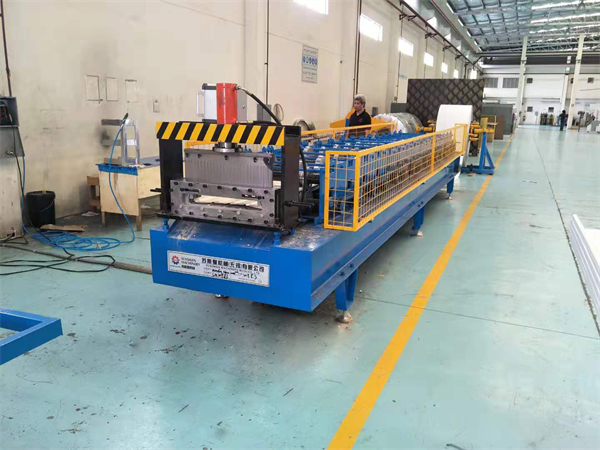
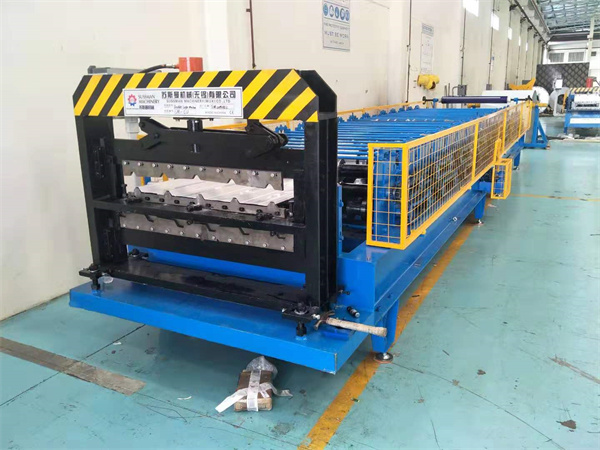

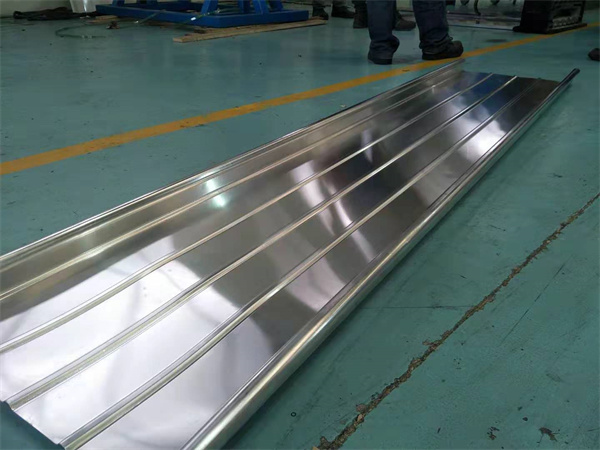


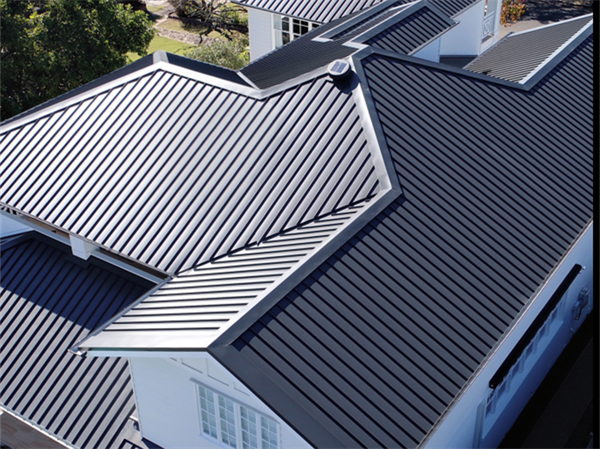

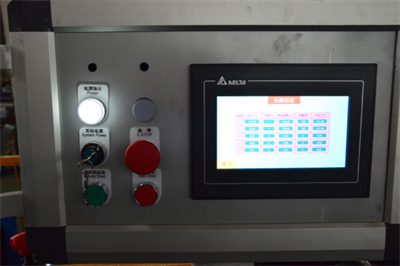



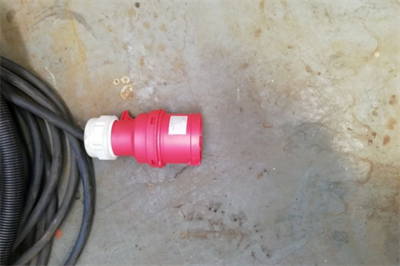



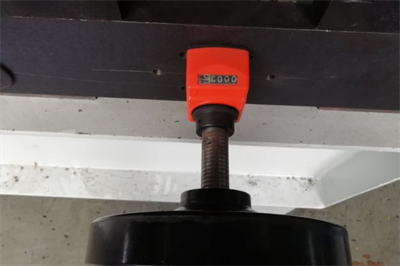





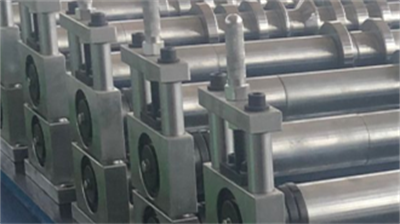

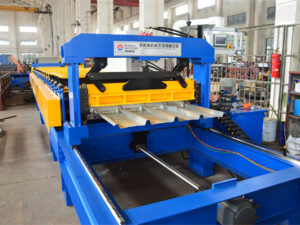
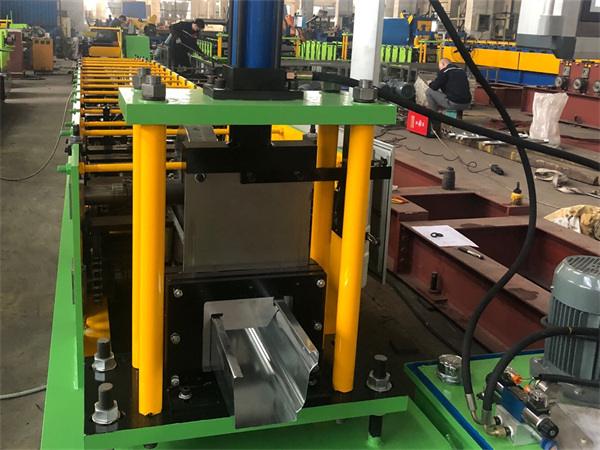
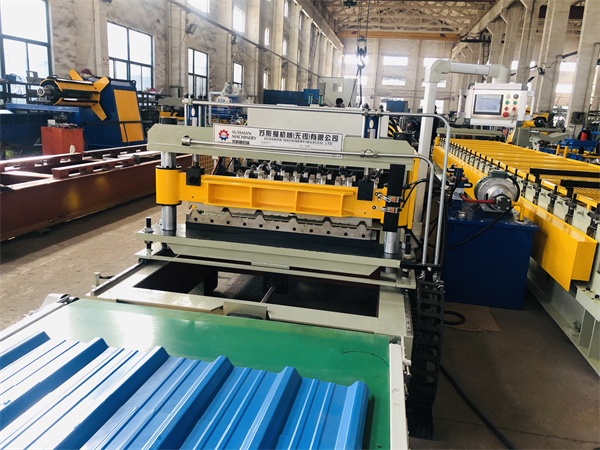
Valoraciones
No hay valoraciones aún.